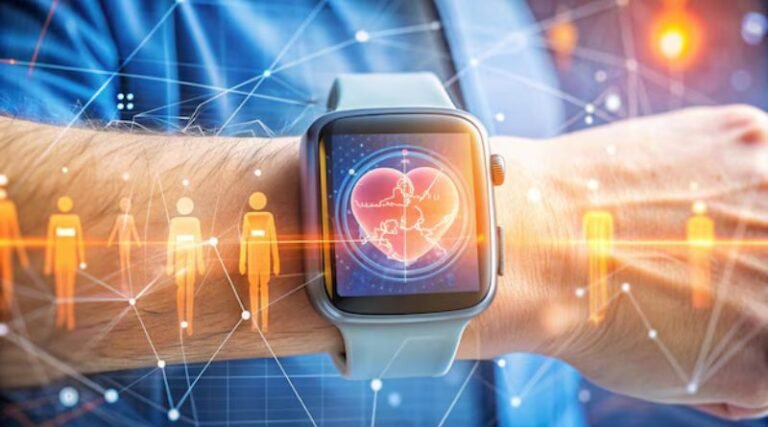Wearable Technology: Enhancing Health and Lifestyle Monitoring
In recent years, wearable technology has moved beyond just being a trend and evolved into an integral part of modern health and lifestyle monitoring. From fitness trackers and smartwatches to advanced biosensors, wearable devices are empowering individuals to take control of their well-being in ways that were once unimaginable. This revolution is reshaping how we approach healthcare, fitness, and daily life by providing real-time insights, promoting healthier habits, and enabling personalized care.
The Rise of Wearable Technology
Wearable technology first gained mainstream attention with the release of basic pedometers and fitness trackers. Devices such as the Fitbit, which debuted in 2009, quickly became popular, encouraging people to track their steps and stay active. Today, the wearables market has expanded significantly, encompassing a wide range of gadgets designed to monitor everything from heart rate and sleep patterns to blood oxygen levels and stress levels.
The demand for wearables has skyrocketed due to their ease of use, portability, and ability to sync with smartphones and apps, offering users a seamless way to track their health metrics. According to a report by IDC, the global wearable market is expected to grow by over 17% annually, showing no signs of slowing down.
How Wearables Enhance Health Monitoring
Wearables have revolutionized health monitoring by making it more accessible and continuous. Unlike traditional health assessments, which often rely on periodic doctor visits, wearables allow users to monitor their vital signs and physical activity 24/7. This continuous data collection offers a holistic view of an individual’s health, providing key insights into their lifestyle, behavior, and overall wellness.
- Tracking Fitness and Activity
The most common feature of wearables is activity tracking, which includes measuring steps, distance traveled, calories burned, and active minutes. Fitness-focused devices also monitor workouts, offering data on specific activities such as running, cycling, or swimming. By providing users with real-time feedback, these devices encourage people to set and achieve personal fitness goals, making physical activity a regular part of their daily routine. - Heart Rate and Sleep Monitoring
Wearables equipped with heart rate sensors enable continuous monitoring of cardiovascular health. Users can track their resting heart rate, heart rate variability (HRV), and even monitor for irregular heart rhythms, helping them detect potential issues early. Sleep tracking features analyze sleep patterns, providing insights into the quality and duration of sleep. With this information, users can make adjustments to their routines, improving their sleep hygiene and overall well-being. - Advanced Health Metrics
Beyond basic fitness tracking, modern wearables are equipped with advanced sensors that monitor blood oxygen levels (SpO2), body temperature, and even electrodermal activity (EDA) for stress detection. Some wearables also feature electrocardiogram (ECG) capabilities, which can provide users with data that might indicate atrial fibrillation (AFib) or other heart conditions. These features are especially valuable for individuals managing chronic conditions or for those looking to optimize their health through preventive care.
Lifestyle Monitoring and Behavior Change
While wearables are excellent tools for tracking physical health, they also play a significant role in promoting positive lifestyle changes. By providing users with data on their habits and behaviors, wearable devices encourage mindfulness and self-awareness, which can lead to healthier choices over time.
- Personalized Insights
Many wearables come with companion apps that provide users with personalized insights and recommendations. These apps analyze the collected data and offer actionable feedback, such as reminders to stand up, suggestions for a better sleep schedule, or guidance on how to improve fitness levels. This personalized coaching helps users stay motivated and accountable, making it easier to stick to healthy habits. - Stress and Mental Health Tracking
Newer wearables are also focused on mental well-being, using tools like guided breathing exercises, meditation prompts, and stress-level monitoring. These features encourage users to prioritize mental health, offering a holistic approach to wellness that includes both physical and psychological health. - Gamification and Social Connectivity
Many wearable apps incorporate gamification features, such as awarding badges for hitting milestones or offering friendly competition with friends and family. This gamification fosters motivation and engagement, turning the pursuit of a healthier lifestyle into an enjoyable and rewarding experience. The social connectivity aspect also creates a sense of community, further encouraging users to stay active and healthy.
The Future of Wearable Technology in Healthcare
As wearable technology continues to advance, its role in healthcare will likely become even more significant. The integration of artificial intelligence (AI) and machine learning algorithms will enable wearables to provide even more personalized and predictive insights. For instance, AI-powered wearables could detect subtle changes in a user’s health data, flagging potential problems before they become serious.
Furthermore, wearables are playing a growing role in remote patient monitoring, especially for individuals with chronic conditions. Healthcare providers can now access real-time patient data, allowing for more proactive and tailored care. This trend is expected to continue as wearables become increasingly sophisticated and integrated into healthcare systems.
Conclusion
Wearable technology is revolutionizing the way we monitor our health and manage our lifestyles. By offering real-time data and personalized insights, wearables empower individuals to take charge of their well-being like never before. From fitness tracking and sleep monitoring to stress management and advanced health metrics, these devices are enhancing the quality of life for millions of people. As innovation in wearable technology continues to evolve, it’s clear that this trend is not just a passing fad but a critical tool in the future of health and wellness management.

